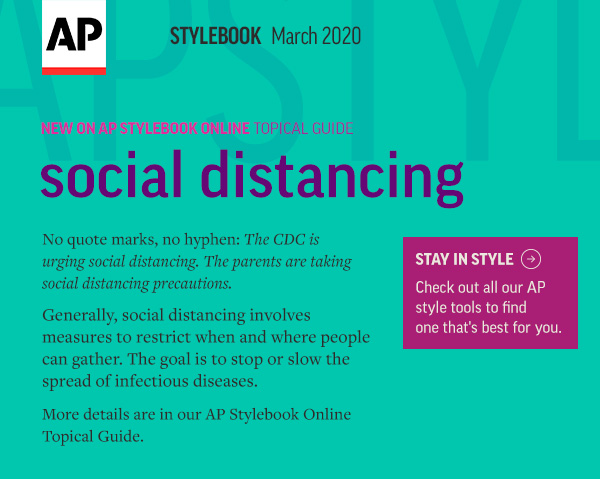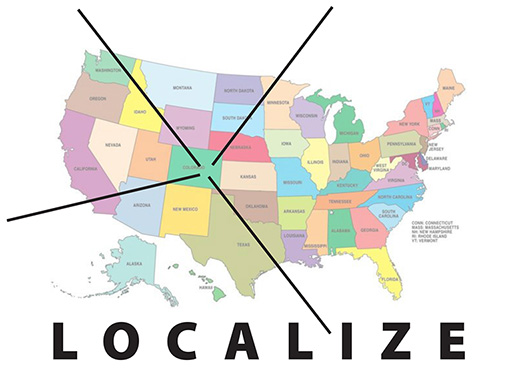
Need images, free for all Americans, from the CDC? Go here for their image library.
TOPICAL GUIDE
Our guide covers coronavirus and COVID-19
Whether you write about health, business, sports, entertainment, politics … basically, everything … you’re probably writing about the coronavirus and its effects right now.
AP Stylebook Online’s latest Topical Guide covers a range of terms about the new coronavirus and the disease it causes, COVID-19. For example:
coronaviruses
A family of viruses, some of which cause disease in people and animals, named for crownlike spikes on their surfaces.
The viruses can cause the common cold or more severe diseases such as SARS (severe acute respiratory syndrome), MERS (Middle East respiratory syndrome) and COVID-19, the latter of which first appeared in late 2019 in Wuhan, China.
As of March 2020, referring to simply the coronavirus is acceptable on first reference in stories about COVID-19. While the phrasing incorrectly implies there is only one coronavirus, it is clear in this context. Also acceptable on first reference: the new coronavirus; the new virus; COVID-19.
In stories, do not refer simply to coronavirus without the article the. Not: She is concerned about coronavirus. Omitting the is acceptable in headlines and in uses such as: He said coronavirus concerns are increasing.
Passages and stories focusing on the science of the disease require sharper distinctions.
COVID-19, which stands for coronavirus disease 2019, is caused by a virus named SARS-CoV-2. When referring specifically to the virus, the COVID-19 virus and the virus that causes COVID-19 are acceptable. But, because COVID-19 is the name of the disease, not the virus, it is not accurate to write a new virus called COVID-19.
SARS is acceptable on first reference for the disease first identified in Asia in 2003. Spell out severe acute respiratory syndrome later in the story.
MERS is acceptable on first reference. Spell out Middle East respiratory syndrome later in the story.
Symptoms of COVID-19 can include fever, cough and breathing trouble. Most develop only mild symptoms. But some people, usually those with other medical complications, develop more severe symptoms, including pneumonia, which can be fatal.
Do not exaggerate the risks presented by any of the three diseases by routinely referring to them as deadly, fatal or the like.
epidemic, pandemic
An epidemic is the rapid spreading of disease in a certain population or region; a pandemic is an epidemic that has spread worldwide. Use sparingly; follow declarations of public health officials. On March 11, the World Health Organization declared the COVID-19 outbreak a pandemic.
incubation period
Time between infection and the appearance of signs or symptoms of an illness. The incubation period for the new virus is thought to be up to two weeks.
isolation
Separating sick people from healthy people to prevent spread of disease. For example, people with the infection are put in isolation in hospitals.
quarantine
Restricting movement of healthy people who may have been exposed to an infection to see if they become ill. For example, the passengers on the Diamond Princess cruise ship in Japan were quarantined.




